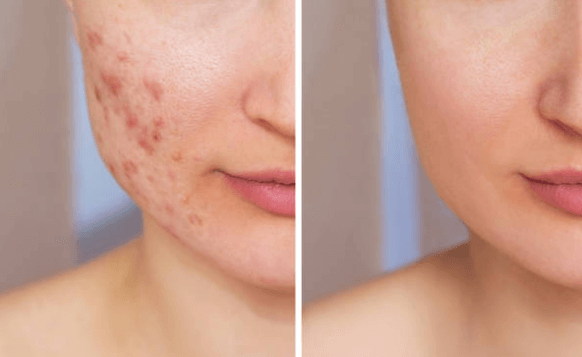The Science Behind PRP Hair Treatment: How It Works

Platelet-rich plasma (PRP) therapy has gained significant attention in the field of hair restoration as a non-invasive and potentially effective treatment for hair loss. This innovative approach involves using a patient’s blood to harness growth factors and stimulate hair follicles, aiming to promote hair regrowth and improve hair density. Understanding the scientific principles behind PRP therapy is crucial in comprehending its mechanism and efficacy in treating hair loss.
What is PRP Therapy?
PRP therapy is a medical procedure that utilizes the patient’s blood to extract and concentrate platelets, which are rich in growth factors. These growth factors play a vital role in tissue regeneration and repair. The process begins with a blood draw from the patient, typically from the arm. The collected blood is then centrifuged to separate its components: red blood cells, plasma, and platelets. The platelet-rich plasma is isolated and prepared for injection into the targeted area.
How Does PRP Work for Hair Restoration?
Hair loss, whether due to genetic factors, hormonal changes, or other reasons, often involves miniaturization of hair follicles and a disrupted hair growth cycle. PRP therapy aims to address these issues by stimulating follicular activity and promoting hair growth.
When injected into the scalp, PRP releases growth factors such as platelet-derived growth factor (PDGF), transforming growth factor-beta (TGF-β), vascular endothelial growth factor (VEGF), and others. These growth factors have multifaceted effects:
1. Stimulation of Hair Follicles: Growth factors in PRP stimulate dormant or weakened hair follicles, promoting the transition of hair follicles from the resting phase (telogen) to the active growth phase (anagen).
2. Increased Blood Supply: VEGF, among other factors, promotes angiogenesis, which is the formation of new blood vessels. This enhances blood flow to the hair follicles, providing better nourishment and oxygenation to support hair growth.
3. Reduced Inflammation: PRP contains anti-inflammatory properties that may help reduce inflammation around the hair follicles, which can contribute to hair loss.
4. Proliferation of Dermal Papilla Cells: Dermal papilla cells play a crucial role in hair follicle development and regeneration. Growth factors in PRP may stimulate the proliferation of these cells, contributing to hair growth.
Scientific Evidence Supporting PRP for Hair Restoration
Numerous studies and clinical trials have investigated the efficacy of PRP therapy in treating hair loss. While research is ongoing and results may vary among individuals, several studies have reported positive outcomes:
1. A Study Published in Dermatologic Surgery (2019) concluded that PRP injections were a safe and effective treatment for androgenetic alopecia (pattern baldness). The study noted significant improvements in hair density and thickness.
2. A Meta-analysis Published in Aesthetic Plastic Surgery (2020) reviewed multiple studies and found that PRP treatment for hair loss showed significant improvements in hair regrowth compared to control groups.
3. A Randomised Controlled Trial in the Journal of Cutaneous and Aesthetic Surgery (2014) reported that PRP injections in patients with male and female pattern hair loss led to increased hair count and thickness compared to baseline measurements.
Limitations and Considerations
While PRP therapy shows promise, it’s essential to acknowledge its limitations and factors that may influence its efficacy:
1. Individual Variability: Results can vary significantly among individuals due to factors such as age, severity of hair loss, underlying health conditions, and adherence to treatment protocols.
2. Frequency and Number of Sessions: The optimal frequency and number of PRP sessions required for noticeable results may vary. Patients often require multiple sessions spaced over several months for optimal outcomes.
3. Complementary Treatments: PRP therapy is sometimes used in conjunction with other hair restoration treatments like medications (e.g., minoxidil, finasteride) or hair transplant surgery for more comprehensive results.
The Future of PRP Hair Treatment In Australia
The future of PRP hair treatment in Australia holds immense promise and potential for further advancement. In recent years, PRP therapy has gained traction in the country as a viable solution for hair loss. The evolving landscape of regenerative medicine and the growing demand for non-invasive hair restoration procedures indicate a bright future for PRP therapy in Australia.
The ongoing research and development within the field are likely to refine existing protocols, enhancing the effectiveness of PRP treatments for hair loss. Clinical studies focusing on optimizing the concentration of growth factors in PRP, determining the ideal treatment frequency, and exploring combination therapies could pave the way for more tailored and efficient procedures.
Moreover, with advancements in technology and medical research, innovative techniques for harvesting and processing PRP may emerge, further streamlining the treatment process. Collaborations between medical professionals, researchers, and technology innovators may lead to the development of automated systems or devices that simplify and standardize PRP extraction and application.
The increased awareness and acceptance of PRP therapy among both practitioners and the public are poised to drive its integration into mainstream hair restoration practices across Australia. As the scientific understanding of PRP’s mechanisms deepens and its efficacy becomes more established, it is likely to become a staple in the arsenal of treatments for combating hair loss in the country.
Read also What is the Role of Exercise Physiologists in Improving Fitness and Health?
Conclusion
PRP therapy for hair restoration operates on the principle of harnessing the regenerative potential of growth factors found in platelets. By stimulating hair follicles, increasing blood supply, and reducing inflammation, PRP aims to reverse hair miniaturization and promote hair regrowth. While scientific evidence suggests its efficacy, further research is needed to refine treatment protocols and determine its long-term effects. As a minimally invasive procedure with low risk, PRP therapy offers a promising avenue for individuals seeking alternatives to address hair loss concerns.





